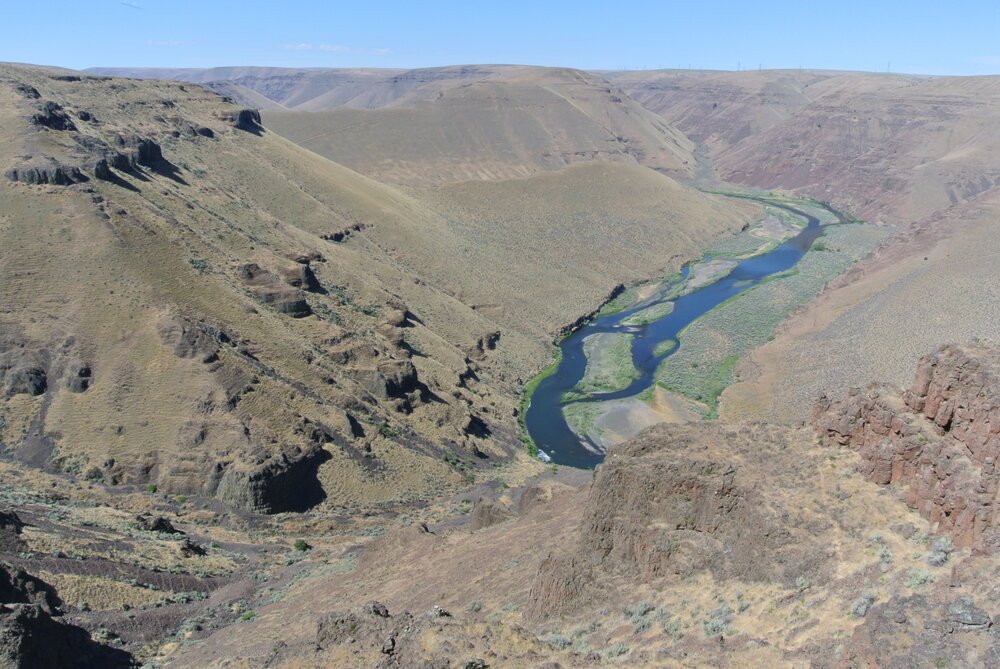Where We’re Working
Regional Work
The REV collaborates with regional partners to support efforts that make a difference toward resolving complex issues in eastern Oregon.
Whether in response to longstanding issues such as a lack of quality, affordable workforce housing or the coordination of responses to a global pandemic - these challenges require collaboration amongst a broad range of constituents. The REV can help convene partners and facilitate the efforts to will help us identify and reach our common goals.
RECENT PROJECTS
two rural planning projects: City of Joseph and Wallowa County Fairgrounds,
a rural transportation equity study in Morrow County,
a regional socioeconomic analysis to provide insight into the potential economic impact of changes in forest management activities,
collaborating with other entities to host a series of events to inform, inspire and take action toward resolving shortages of suitable workforce housing in the region,
developing an innovation hub for northeast Oregon for science and technology-based entrepreneurs
What is rural?
Images flow through our minds when we imagine rural. We often conjure up images of…
open spaces,
farm fields,
small towns with old buildings and faded murals,
maybe the view of an empty gravel road ahead. Rural can be many things but it’s usually defined by what it isn’t — it’s not urban.
What defines an urban or metropolitan area varies but typically the distinction between rural and urban is only important when funding is on the table.
The US census defines urban areas as towns with more than 50,000 people and urban clusters as those towns with more than 2,500 people. This definition tends to overestimate rural by designating some suburban areas as rural. The Office of Management and Budget at the White House categorizes rural and metro areas by county. Similar to the census, they define metropolitan areas as towns with more than 50,000 people. If a county has at least one town with a population over 50,000 then the whole county will be considered metro. If there is no town that of that size, then the whole county is considered rural. This definition tends to underestimate rural, especially in western states where counties can be quite large in geography.
The National Center for Education Statistics (NCES) has the most comprehensive and detailed strategy for defining rural and urban. These definitions begin with the categories of City, Suburb, Town, and Rural and further delineate these by size and remoteness. A City or Suburb can be large, medium, or small. Using the census definitions of Urban Areas and Urban Clusters, a Town or Rural area can be classified as located on the fringe of an urban area, distant from an urban area, or remote. These dual categories give a better sense of the diversity within the rural, urban, and suburban experience.
NCES defines a Rural location as having a population less than 2,500 and a Town as a place with between 2,500 and 50,000 people. Rural is further defined by its proximity to either an Urban Cluster (a Town) or an Urban Area (either a Suburb or a City). Places on the Fringe are Towns that are less than ten miles from an Urban Area or Rural communities that are less than 5 miles from an Urban Area or less than two and a half miles from a Town. A Town is considered Remote if it is located more than 35 miles from an Urban Area. A Rural community is considered Remote if it is located more than 35 miles from an Urban Area and more than ten miles from a Town.
The proximity to urban and metro areas adds an important layer to our understanding of life in rural communities. Many services tend to be located in areas with a higher population density — things like airports, public transportation, higher education, and specialized health care. Federal and State level service providers also tend to be located in urban and metro areas. Another typical trend in urban areas is higher median wages and more diverse economies. All of these factors contribute to differences in opportunity and in the choices people make to live in rural areas, when they are privileged enough to make those choices.
By every definition, eastern Oregon is a rural place. The REV was created to build capacity in this region through collaboration and connecting regional resources. We invite you to explore our website for more information about the demographics and geography of rural communities in eastern Oregon as well, as the talents and interests of the people who live here.







